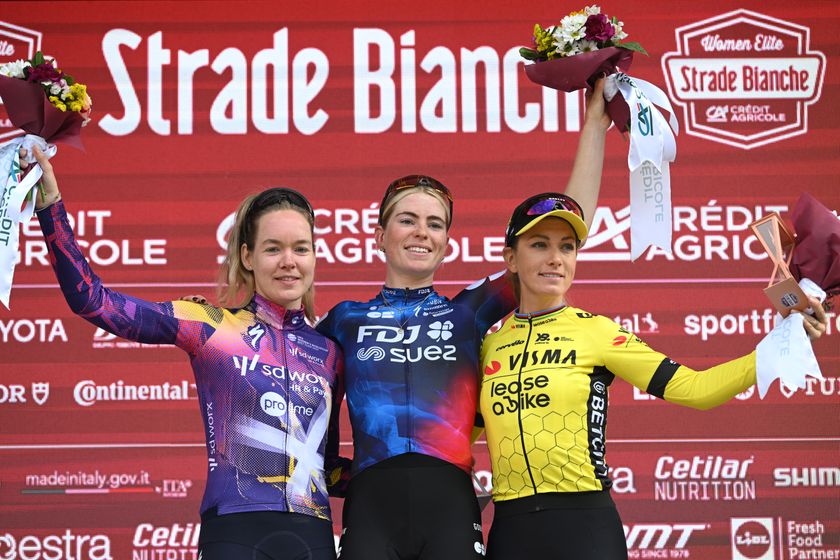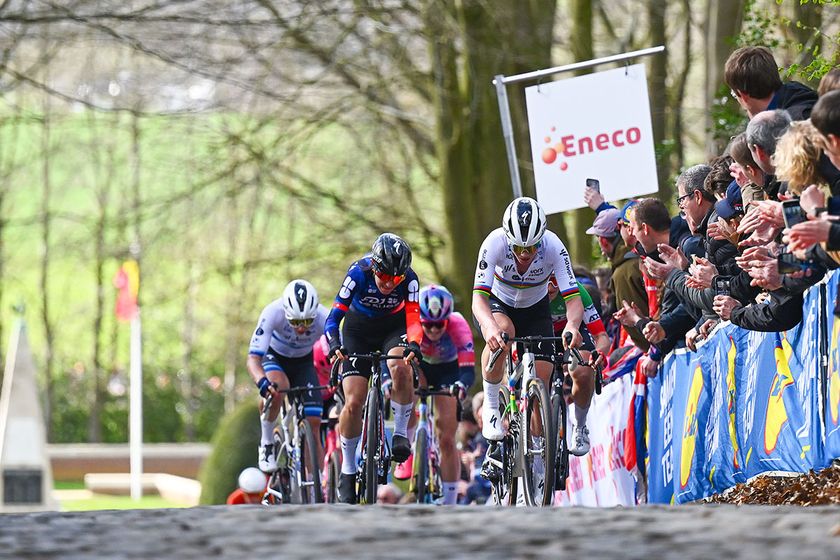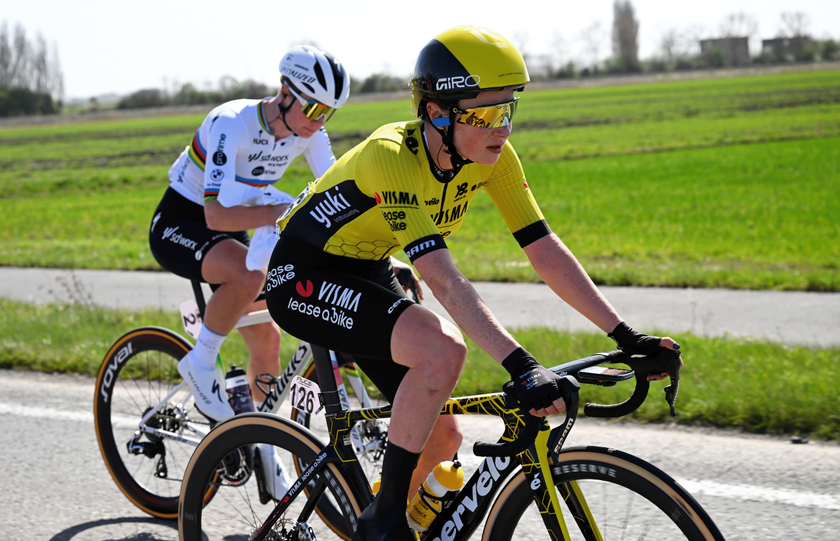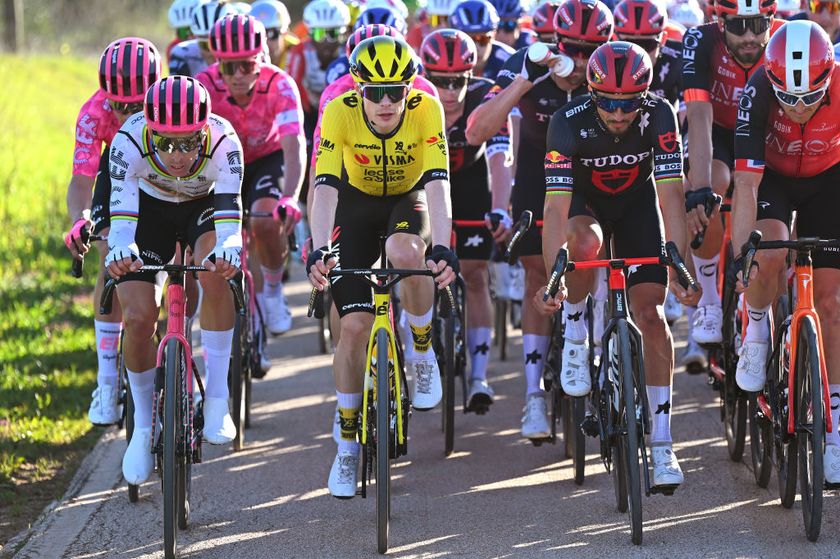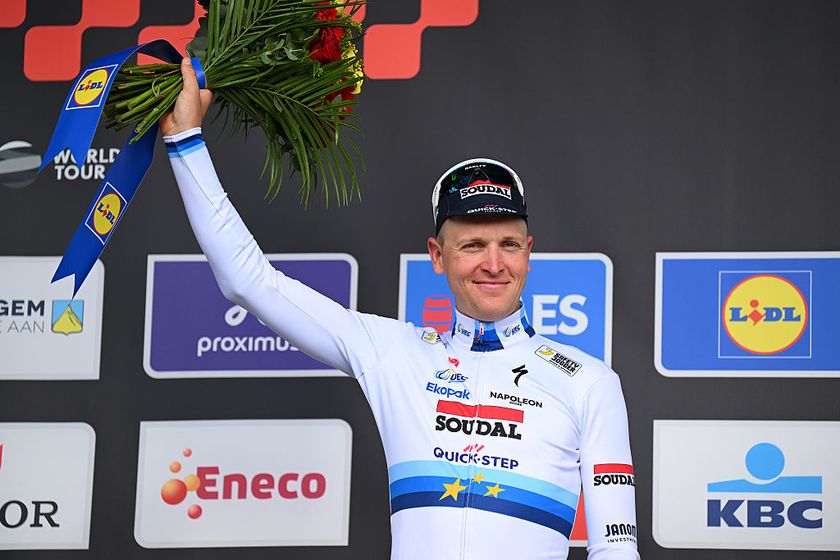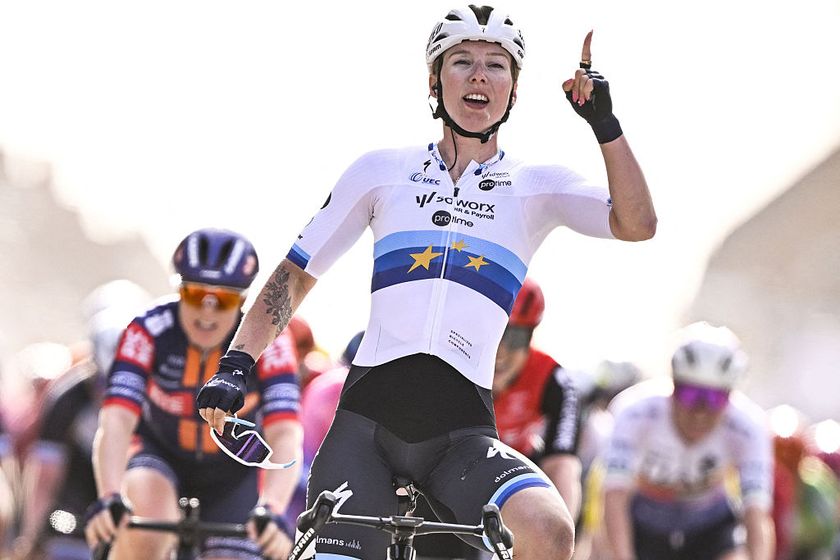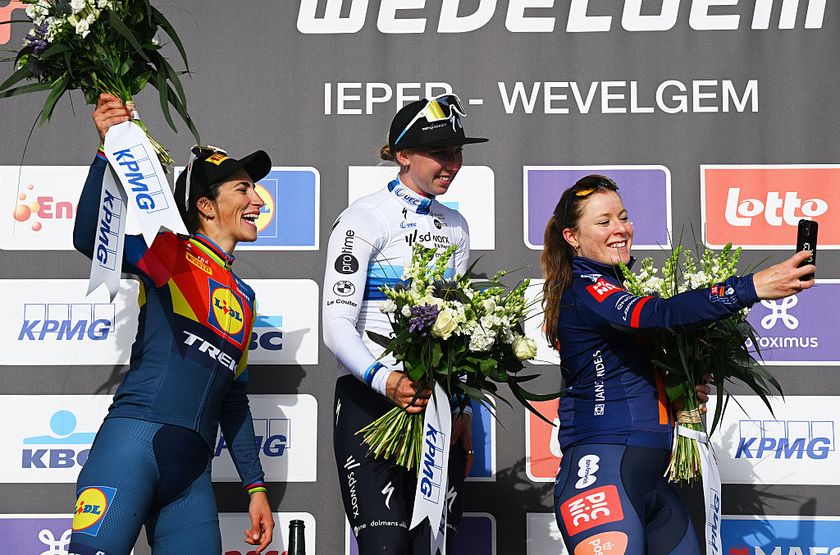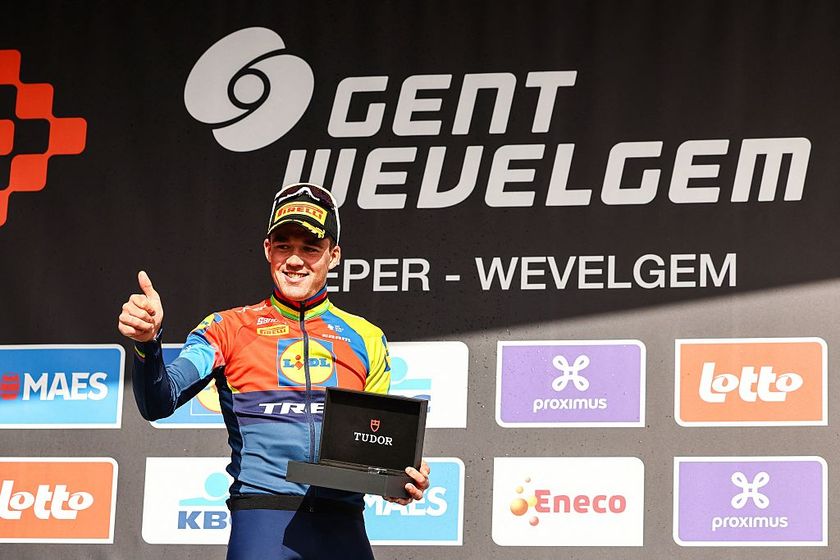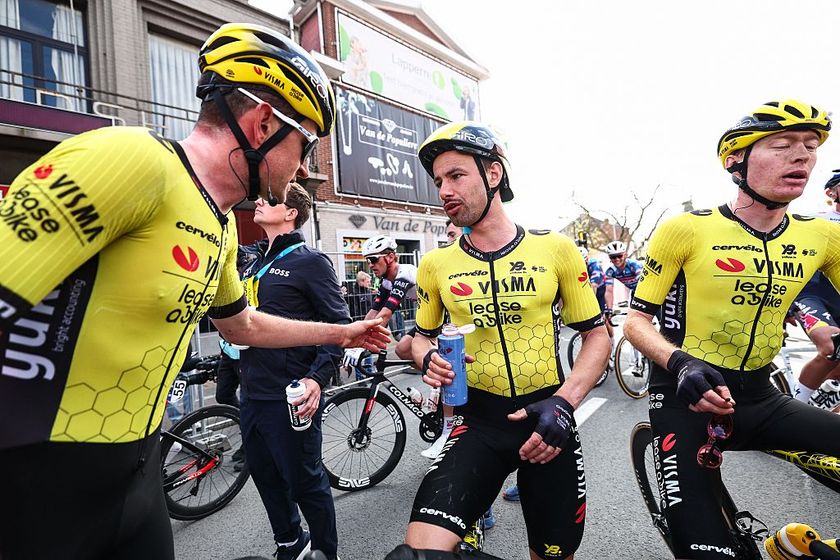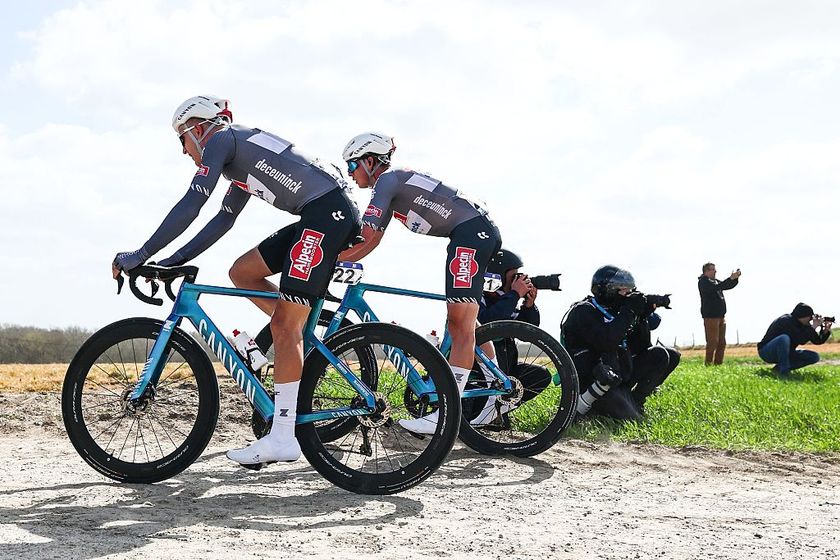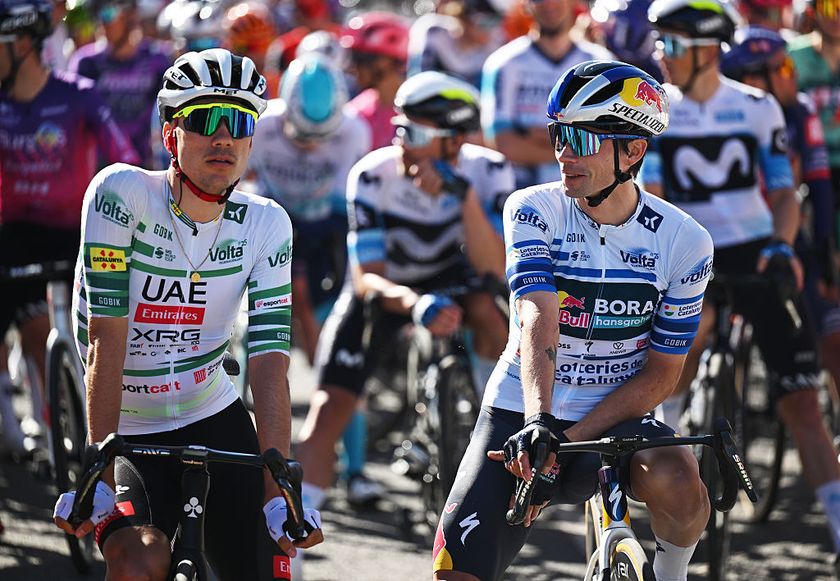Opinion: Women's cycling will get to where it deserves to be
Sadhbh O'Shea on the women's discussion panel at the Rouleur Classic






On Friday, I attended the Rouleur Classic event in London to take part in a discussion panel on the state of women's cycling. Joining Cyclingnews on the panel were Drops Cycling team owner Bob Varney, new Drops rider Abby-Mae Parkinson and Voxwomen's Laura Winter.
Tracey Gaudry Q&A: Half-way point review of the Women's WorldTour
Vos applauds inaugural Women's WorldTour
UCI announce 2017 Women's WorldTour calendar
Women's La Course race to finish on the Col d'Izoard in 2017
Moolman-Pasio would like to see multi-day La Course in future
Vos welcomes new La Course as a step in the right direction
Participation a concern for Philadelphia Cycling Classic as Women's WorldTour calendar expands
Women's cycling has been fighting a long, hard battle to earn the recognition, professionalism and funding that it desires.
While half an hour is only enough time to scratch the surface, it is clear that there is currently a lot to celebrate in women's cycling. A lot has changed since I started working as a cycling journalist back in early 2012. Women's cycling enjoyed a good many races in the past but poor sponsorship meant that events were folding with alarming regularity and teams were struggling to stay afloat.
For me, the 2012 Olympic Games proved a turning point in the slow demise of the sport and gave the women's peloton a platform to show what they can do. All eyes were on them as they raced on a torrid day in London on the second day of competition. Marianne Vos came up trumps in a dramatic finale, and the race not only earned her a gold medal but gave the sport many new fans. Women's cycling now has a very passionate and engaged fan base. Work was needed to build on that success and the voice of Vos and others such as Emma Pooley, Nicole Cooke, Chrissie Wellington and Kathryn Bertine, with their Le Tour Entier project, and many more have helped push women's cycling back in the right direction.
The 2016 season saw the first-ever women's WorldTour, a 17-event competition that combined one-day and stage racing. That is set to increase to 21 events with the introduction of the Amstel Gold Race, Liege-Bastogne-Liege, the Ladies Tour of Norway and the Holland Ladies Tour. While women's cycling is far from plush with funds, teams are increasingly stable and the news that Vos' Fortitude Pro Cycling has secured the sponsorship of WM3 Energie for the next five years is a very encouraging sign.
The Women's WorldTour ensures that its races are held to a better standard and races such as Strade Bianche, the Women's Tour and the Tour of Flanders (plus several others) are as professional as the men's race. Prize money is also on the up in some cases with the Ride London Classique offering €25,000 for the winner. Money like that is still hard to come by in women's cycling, but it is a step in the right direction. The peloton it self also has more depth and is stronger than it has been in more recent times.
Still work to be done
Get The Leadout Newsletter
The latest race content, interviews, features, reviews and expert buying guides, direct to your inbox!
It's not all butterflies and rainbows, however, and there is still a long way to go before the women can get close to parity with the men's side of the sport. Despite the improvements and the increased stability, in terms of sponsors, few teams can pay their riders a 'living wage'. Varney will be paying his riders at Drops a salary next season, one that he says will be good by women's cycling standards but not good enough to be classified as a 'living wage'. Minimum salaries have been a hot topic of discussion for many seasons now, but so far that goal has been untenable.
When Cyclingnews spoke to UCI President Brian Cookson after the finish of this year's La Course, he was fairly evasive on the topic. On Friday, Varney was adamant that the sport was not ready to make the step in 2017 but it looked likely that a tiered system would be put in place for the following season, opening up the door for minimum wage. It's not just minimum wage for riders, but also the ability to bring on full-time professional staff that is needed.
While having more races is good for the sport, we need to make sure that they're organised in the right way and not only as an afterthought tagged onto men's races. Female riders are elite athletes, and they need to be given the courses that can demonstrate that. The Giro Rosa, the only Grand Tour left on the women's calendar, time and again delivers challenging and demanding routes.
Next year's La Course is a prime example of where the women's race appears to be an afterthought. It was always going to play second fiddle to the Tour de France, and that is understandable. Race organiser, the ASO is not there to promote women's cycling, it exists to make money. But it feels like they could have done more. Moving the race into the mountains is a positive move - as all too often women get flat circuit racing, which only caters to a select few riders. But why so short? 67 kilometres is barely a race, and it discredits the talents of the riders who will turn up to compete. It will be raced on the same day as the men's stage, which throws up some logistical issues. Surely it wouldn't have hurt ASO to add a few extra kilometres.
We can only hope that this is the organisers testing the waters and we will see more from them in 2018. For now, it feels like a sideways step rather than moving forward.
Times are a changing
During the discussion at the Rouleur Classic event, we were asked to pick one thing we would like to change on women's cycling. From a rider's perspective, Parkinson's choice was better care of the riders when attending races. Accommodation can often be lacking as organisers look to penny-pinch, as can facilities at the starts and finishes of races. Her new boss Varney found it hard to settle on one thing, proving that to get women's cycling to where it needs to be will involve working on many areas.
Perhaps this comes with being part of the media but my choice would be better television coverage. We are increasingly able to watch women's cycling on television, but it can still be hard to come by. While passionate fans will happily seek out a live feed or pirate stream online - we all know we've done it – the sport will struggle to bring in new fans if it cannot reach those bigger audiences. Television is not a cure-all, but it is a big factor that will also help to bring in sponsors at a higher level.
These are just a few of the areas that have and will be looked at over the coming years as we try to develop women's cycling but there are more. This is a long-term project that will take time to build into something sustainable and lasting. Too much haste could prove detrimental.
There will be times when it feels like we are banging our head on a brick wall, just like when there is little change or what has been done does not seem in the best interests of the sport. But don't be disheartened, with continued pressure and determination women's cycling will get to where it deserves to be.
Born in Ireland to a cycling family and later moved to the Isle of Man, so there was no surprise when I got into the sport. Studied sports journalism at university before going on to do a Masters in sports broadcast. After university I spent three months interning at Eurosport, where I covered the Tour de France. In 2012 I started at Procycling Magazine, before becoming the deputy editor of Procycling Week. I then joined Cyclingnews, in December 2013.
